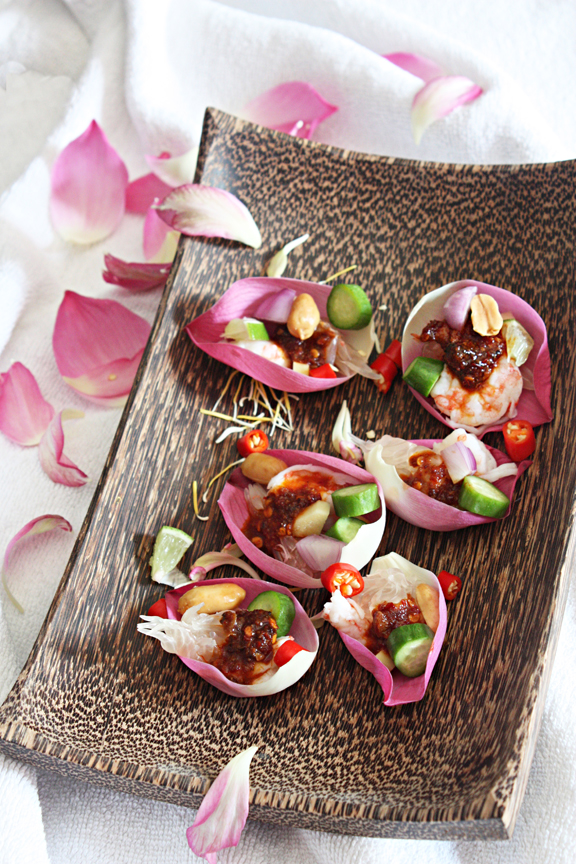
Somebody asked me a couple of weeks ago what my favorite Thai vegetable was. Based on his loud “Huh?”, I guess he wasn’t prepared for my answer, “Lotus stems.”
Before we get to lotus stems and what can be made with them, let’s talk about the incredible versatility of lotus. How incredible is the incredibly versatility of the incredibly versatile lotus? Very incredible — you know, this … incredibly versatile lotus.
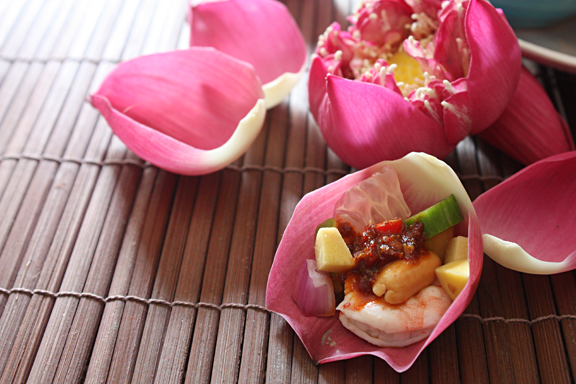
Lotus flowers are not only beautiful to look at, they’re also edible for the most part. The mild-tasting fresh petals can be used in lieu of lettuce cups as shown in the photos above (you can get my recipe for this pomelo-shrimp “miang” with nam prik pao dressing on Serious Eats).
Dried lotus petals were used to make cigarettes in the old days (you put tobacco on a dried lotus petal and roll it up).
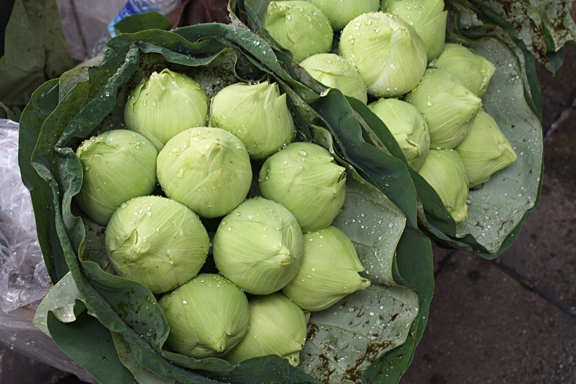
One thing about lotus flowers: in the Thai culture, they have a specific function which is religious in nature. If you see someone carrying a bunch of lotus flowers, chances are they’re not planning on giving them to their love interest or decorate their home/office with them. You’ll most likely see lotus flowers at a home shrine, a spirit house, an ancestral spirit altar, or inside a temple.
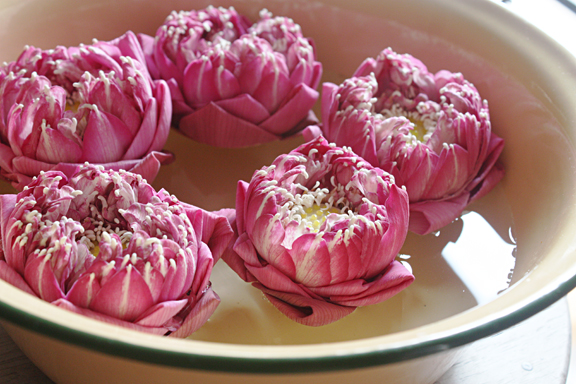
But I like to float them in a large bowl of water like this and call it my “Serenity now!” lotus pond. Or if you prefer a lotus pond that’s completely edible, here it is.
Lotus pollen can also be used to make a home herbal medicine which supposedly treats everything from fainting spells to hair loss.
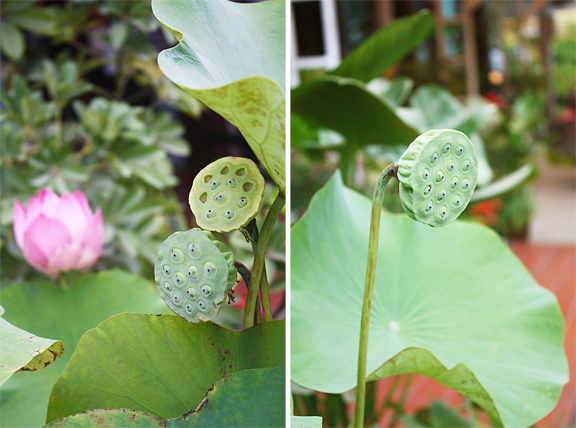
Lotus leaves, when dried, can be used to wrap steamed rice-based dish to impart mild tea-like fragrance to the rice. When fresh, they’re also used as (biodegradable) wrappers.
Lotus pods are also — wait, before I continue, can you see how a lotus pod resembles a shower head? That’s why the Thai word for both things is the same: fak bua (ฝักบัว).
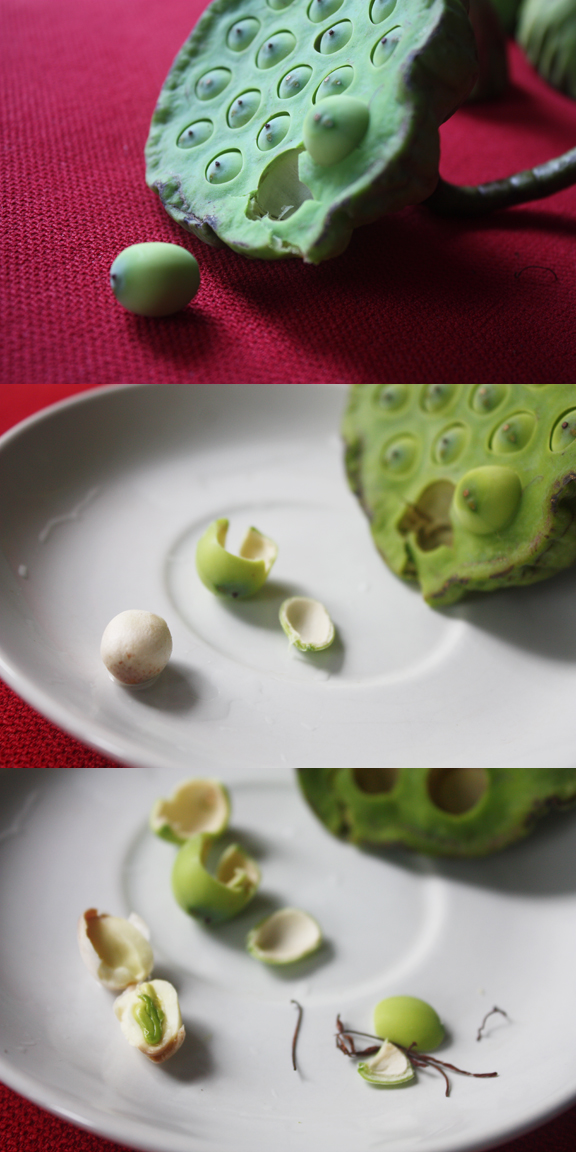
Embedded in young lotus pods are young lotus seeds which when young can be eaten raw like popcorn. In addition to peeling off and discarding the skins before eating, you also have to remove the green sprouts inside the seeds; they are very bitter.
After having all the seeds popped out of them, mature lotus pods can also be dried out and used as decoration.
Mature lotus seeds are dehydrated and used in both savory and sweet dishes. Unlike young/green lotus seeds, mature lotus seeds are much starchier (the texture of cooked mature lotus seeds is similar to that of cooked dried beans). For a bit more information on mature lotus seeds, please visit this page.
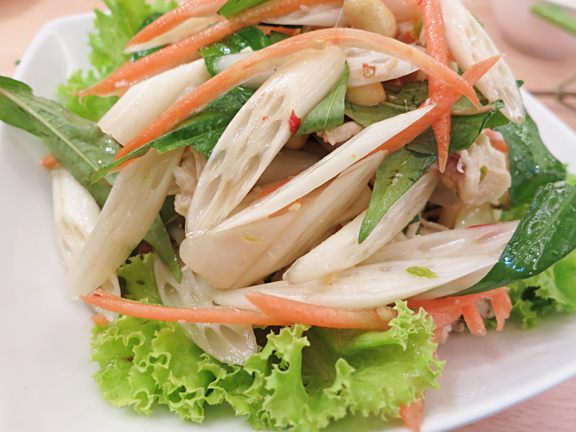
Another new favorite of mine is lotus shoots which are mild, refreshing, and crunchy. This is an herbal salad of blanched lotus shoots and chicken which I had at Ngon Lam Vietnamese restaurant in Bangkok. So good.
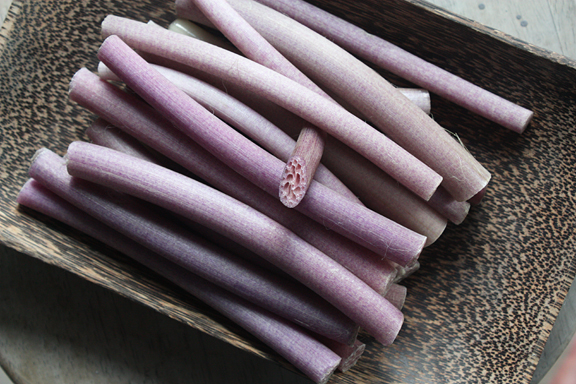
Saving the best for last, here’s lotus stems which I love so much. These are not the leaf stems which are tough, fibrous, resinous, and tannic; these are the flower stems. They can be eaten raw as a side vegetable for relishes; they can also be cut into bite-sized pieces and turned into either a simple stir-fry or a classic coconut-based soup with Thai mackerel.
Readers, did I miss anything?







12 Responses to Lotus in Thai Cuisine and Culture